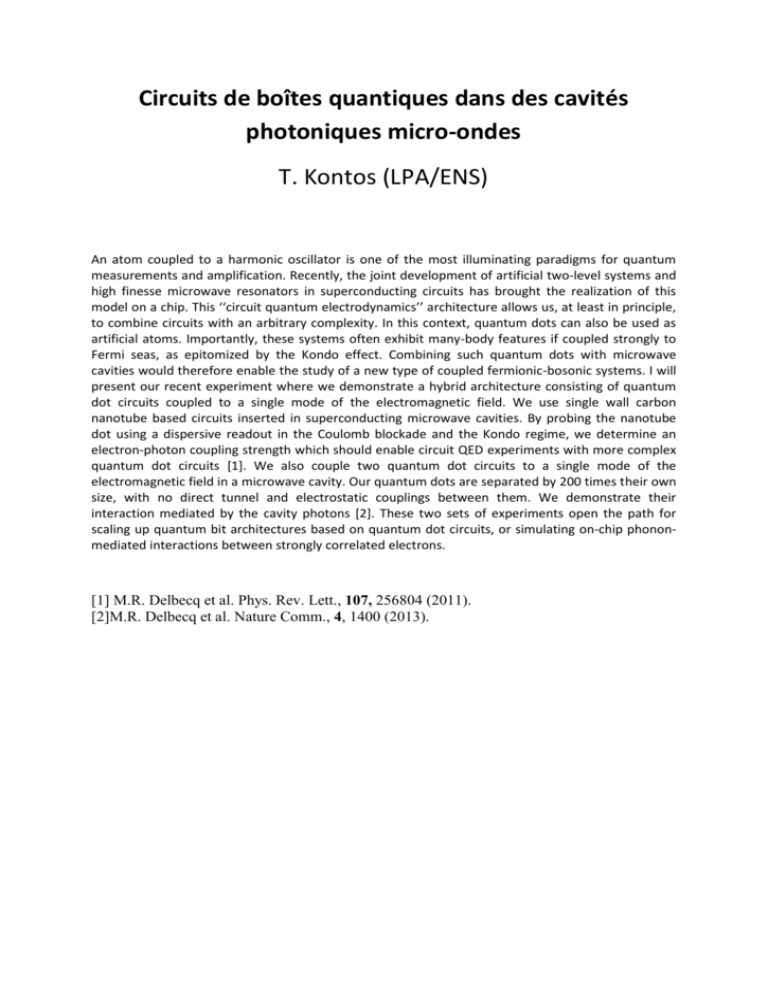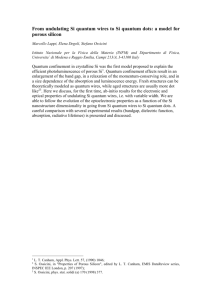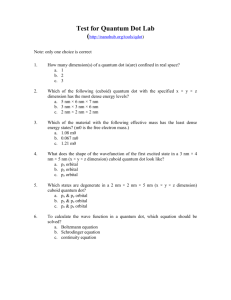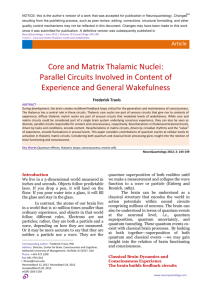Circuits de boîtes quantiques dans des cavités photoniques micro
advertisement

Circuits de boîtes quantiques dans des cavités photoniques micro-ondes T. Kontos (LPA/ENS) An atom coupled to a harmonic oscillator is one of the most illuminating paradigms for quantum measurements and amplification. Recently, the joint development of artificial two-level systems and high finesse microwave resonators in superconducting circuits has brought the realization of this model on a chip. This ‘‘circuit quantum electrodynamics’’ architecture allows us, at least in principle, to combine circuits with an arbitrary complexity. In this context, quantum dots can also be used as artificial atoms. Importantly, these systems often exhibit many-body features if coupled strongly to Fermi seas, as epitomized by the Kondo effect. Combining such quantum dots with microwave cavities would therefore enable the study of a new type of coupled fermionic-bosonic systems. I will present our recent experiment where we demonstrate a hybrid architecture consisting of quantum dot circuits coupled to a single mode of the electromagnetic field. We use single wall carbon nanotube based circuits inserted in superconducting microwave cavities. By probing the nanotube dot using a dispersive readout in the Coulomb blockade and the Kondo regime, we determine an electron-photon coupling strength which should enable circuit QED experiments with more complex quantum dot circuits [1]. We also couple two quantum dot circuits to a single mode of the electromagnetic field in a microwave cavity. Our quantum dots are separated by 200 times their own size, with no direct tunnel and electrostatic couplings between them. We demonstrate their interaction mediated by the cavity photons [2]. These two sets of experiments open the path for scaling up quantum bit architectures based on quantum dot circuits, or simulating on-chip phononmediated interactions between strongly correlated electrons. [1] M.R. Delbecq et al. Phys. Rev. Lett., 107, 256804 (2011). [2]M.R. Delbecq et al. Nature Comm., 4, 1400 (2013).








